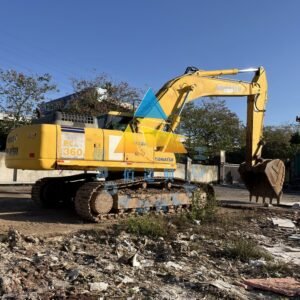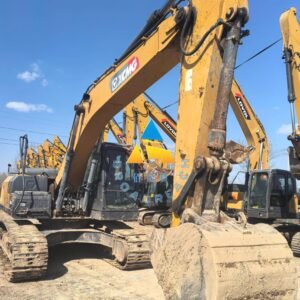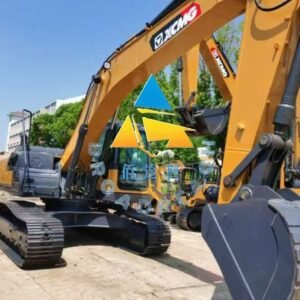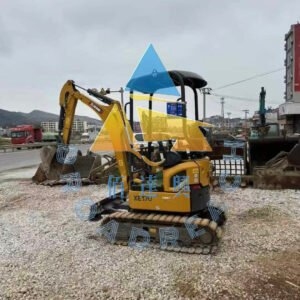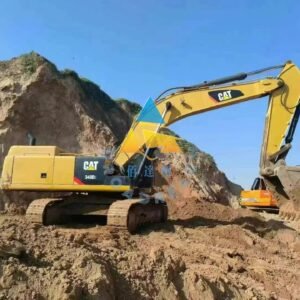BroadReach Construction Machinery Co., Ltd

The Difference Between a Digger and an Excavator
When it comes to construction and heavy machinery, the terms “digger” and “excavator” are often used interchangeably. However, they are not exactly the same thing. Both are used in construction and digging operations, but they have different roles, features, and capabilities. Understanding the differences can help in choosing the right machine for the task at hand.
1. What is a Digger?
The term “digger” is often a generic term used to refer to any machine that is used for digging or excavation. It is not always a specific type of machinery but rather a colloquial term for various types of earth-moving machines. However, in some parts of the world, a “digger” is more commonly associated with a backhoe loader.
A backhoe loader typically consists of a tractor with a bucket at the front and a backhoe (a smaller digger arm) at the rear. The backhoe is primarily used for digging trenches, holes, or foundations, while the front loader is used for lifting materials like dirt, sand, or gravel.
Key Features of a Digger (Backhoe Loader):
- Two Components: A front loader and a rear backhoe.
- Versatility: Can be used for a range of tasks like digging, lifting, and hauling.
- Smaller Size: Generally smaller and more compact than larger excavators, making them suitable for tight spaces.
- Maneuverability: Easier to move around on a construction site.
Common Uses:
- Digging small to medium-sized trenches or holes.
- Light demolition work.
- Grading and landscaping.
2. What is an Excavator?
An excavator is a heavy-duty construction machine specifically designed for digging and moving large amounts of earth. Unlike a backhoe loader, an excavator has a distinct design, with a long hydraulic arm (also known as a boom) and a bucket at the end, designed primarily for digging. Excavators come in different sizes, ranging from compact models used in tight spaces to large-scale machines used for major earth-moving tasks.
There are different types of excavators, including crawler excavators (which have tracks) and wheeled excavators (which have wheels). Crawler excavators are especially effective on rough or uneven terrain, while wheeled excavators are faster and more mobile on smooth surfaces.
Key Features of an Excavator:
- Hydraulic Arm: A long, powerful arm with a bucket, often capable of reaching significant depths and heights.
- Power and Size: Typically much larger and more powerful than a backhoe loader.
- Tracks or Wheels: Excavators with tracks can handle rough terrain, while wheeled excavators are faster on flat ground.
- Rotating Body: The ability to rotate the entire body 360 degrees, allowing for greater flexibility and versatility in operation.
Common Uses:
- Excavating large volumes of soil or rock.
- Digging deep trenches or foundations.
- Mining, demolition, and site preparation.
- Lifting and placing heavy materials or objects.
3. Key Differences Between a Digger and an Excavator
| Feature | Digger (Backhoe Loader) | Excavator |
|---|---|---|
| Size | Smaller, more compact | Larger, heavier, and more powerful |
| Arm Design | Two components: front loader and rear backhoe | Long hydraulic arm (boom) with a bucket |
| Rotational Ability | Limited rotation (mostly fixed arm) | Full 360-degree rotation of the body |
| Mobility | More maneuverable in tight spaces | Generally slower, but can handle larger tasks |
| Common Tasks | Small-to-medium digging, trenching, grading | Large-scale excavation, heavy lifting, and demolition |
| Terrain | Suitable for flat and relatively smooth terrain | Works on a variety of rough or uneven terrains (especially crawler excavators) |
| Flexibility | Less versatile in large-scale projects | Highly versatile for diverse tasks like digging, lifting, and demolition |
4. When to Choose a Digger vs. an Excavator
- Choose a Digger (Backhoe Loader) if you are working on a smaller site or need a machine that can handle multiple tasks. Backhoe loaders are ideal for jobs that require maneuvering in tighter spaces, such as residential construction, small excavation projects, or landscaping. Their versatility also makes them a great choice for projects that require both digging and material handling.
- Choose an Excavator if you have large-scale excavation tasks, need to dig to greater depths, or are working in a more rugged environment. Excavators excel in tasks that require heavy-duty digging, lifting, and precise maneuvering. Their ability to rotate 360 degrees also makes them ideal for demolition, mining, and larger construction projects where power and efficiency are critical.
Conclusion
In summary, while both diggers and excavators serve similar purposes, they are different in design, size, and functionality. A digger, often referring to a backhoe loader, is a smaller, versatile machine best suited for smaller jobs or projects in confined spaces. An excavator, on the other hand, is a larger, more powerful machine designed for heavy-duty excavation, lifting, and digging tasks, making it ideal for larger-scale construction projects.
When choosing between the two, consider the size of the project, the type of terrain, and the specific tasks you’ll need the equipment to perform.

